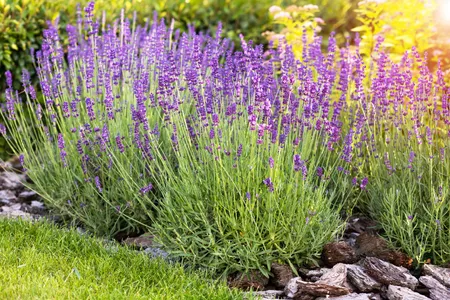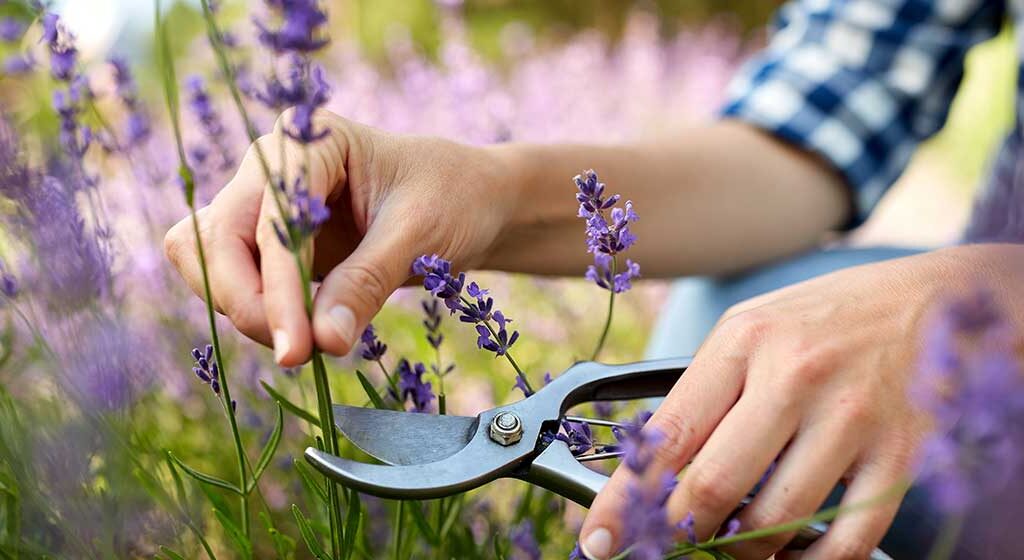Lavender is one of the most beloved plants in the garden world — known for its soothing fragrance, striking purple blooms, and ability to attract pollinators like bees and butterflies. Native to the Mediterranean, this hardy, drought-tolerant shrub is surprisingly easy to care for, provided you understand one crucial maintenance task: pruning.
While lavender is often considered a “plant it and forget it” type, regular pruning is essential to keep it looking tidy, vigorous, and blooming at its best year after year. Without pruning, lavender can become leggy, woody, and prone to splitting, ultimately shortening its lifespan.
In this comprehensive, step-by-step guide, we’ll show you exactly how to prune lavender plants to keep them healthy, encourage lush growth, and prolong their beautiful life in your garden.

Why Pruning Lavender Is So Important
Pruning lavender isn’t just a cosmetic practice — it directly impacts the plant’s health and longevity. Let’s break down the key reasons:
Encourages Bushier Growth
Without regular pruning, lavender stems grow long and spindly. Cutting them back encourages new shoots to sprout from the base, keeping the plant compact and dense.
Prevents Woody Centers
Unpruned lavender often develops a woody center, which weakens the plant and leads to an untidy, uneven appearance. Pruning reduces this tendency.
Boosts Flower Production
Pruned plants produce more flowers, as energy is directed toward new, productive growth rather than maintaining old, woody stems.
Extends Plant Lifespan
By removing old growth, pruning stimulates rejuvenation and can dramatically increase the lifespan of your lavender plant — often adding several healthy years.

When Should You Prune Lavender?
Timing is everything when it comes to pruning lavender. The best times are:
After the First Bloom (Mid to Late Summer)
Lightly prune to shape the plant and remove spent flower spikes. This helps tidy the plant and may encourage a second, smaller bloom.
End of the Growing Season (Early Fall or Early Spring)
Perform a more substantial pruning once flowering has finished for the season. This will prepare the plant for winter and promote robust growth come spring.
Important Note:
Avoid heavy pruning in late fall in colder regions, as new growth may not have time to harden before frost.

Types of Lavender and Their Pruning Needs
Different types of lavender may require slightly different pruning approaches. The most common varieties include:
- English Lavender (Lavandula angustifolia) — Cold hardy and perfect for garden borders; responds well to both light and hard pruning.
- French Lavender (Lavandula dentata) — Less cold-hardy, prefers milder winters, and benefits from lighter, more frequent trims.
- Spanish Lavender (Lavandula stoechas) — Distinctive “rabbit ear” flowers, requires lighter pruning, particularly in cooler climates.
For all types, the general pruning techniques are similar, with adjustments in severity depending on variety and climate.

Tools You’ll Need
Before you begin, gather these essential pruning tools:
- Sharp hand pruners or garden shears
- Gloves (lavender can be tough and slightly resinous)
- A clean cloth or disinfectant (to sanitize blades between plants)
Keeping your tools sharp and clean is important to make clean cuts and reduce the risk of spreading disease.
How to Prune Lavender: Step-by-Step
Let’s walk through the pruning process for healthy, flourishing lavender plants.
Step 1: Deadhead Spent Blooms
As the first flowering season winds down, use sharp snips to cut off spent flower spikes just above the foliage. This improves the plant’s appearance and may trigger a light rebloom.
Pro Tip:
Cut flower spikes with about 1–2 inches of stem attached if you’d like to dry them for sachets or decorations.
Step 2: Light Summer Shaping
After deadheading, gently shape the plant by snipping off any stray or overly long stems to maintain a rounded, mound-like form.
Avoid cutting into the old, woody base at this stage — stick to the soft green growth.
Step 3: Hard Prune at Season’s End
In early fall or early spring (depending on your climate), give your lavender a more substantial pruning:
- Reduce overall size by about one-third to one-half.
- Cut just above a set of new green leaf growth.
Avoid cutting into bare, woody stems — lavender struggles to regenerate from old wood.
If the plant has become very woody in the center, prune conservatively and aim to gradually rejuvenate it over multiple seasons.
Step 4: Remove Dead or Diseased Stems
While pruning, inspect the plant for any dead, damaged, or diseased stems and remove them cleanly at the base.
This improves airflow and reduces the risk of fungal diseases like root rot and botrytis.
What to Avoid When Pruning Lavender
Even though lavender is forgiving, a few mistakes can set your plant back. Here’s what to steer clear of:
- Never cut into old wood unless absolutely necessary.
Lavender rarely grows back from bare stems. - Avoid pruning too late in the fall.
New growth won’t have time to harden before winter, increasing the risk of frost damage. - Don’t skip annual pruning.
An unpruned lavender plant quickly turns woody, sparse, and unproductive.
Can You Rejuvenate an Old, Woody Lavender Plant?
If your lavender plant has been neglected and become woody and sparse, it may be possible to rejuvenate it gradually:
- In early spring, prune back the outer growth by one-third, being careful not to cut into old wood.
- Lightly fertilize with a balanced, slow-release fertilizer.
- Keep it consistently watered (but not soggy) through the growing season.
- Continue gentle, gradual pruning over the next 1–2 years to encourage new shoots.
In severe cases, it might be best to start fresh with a new plant.
Bonus: Harvesting and Drying Lavender While Pruning
When pruning flower spikes, why not make use of those fragrant stems? Here’s how:
- Harvest in the morning after dew has dried but before the heat of the day.
- Bundle stems together and secure with a rubber band.
- Hang upside down in a dark, dry, well-ventilated room.
- After 2–4 weeks, your lavender will be dry and ready for crafts, teas, or sachets.
Conclusion
Pruning is one of the most important — yet often overlooked — aspects of lavender care. By learning how to properly prune lavender plants, you’ll not only keep your garden looking neat and beautiful but also promote vigorous, healthy growth and abundant blooms.
Remember to deadhead regularly, shape your plants in summer, and give them a hard prune at season’s end while avoiding cuts into old wood. With these simple yet essential techniques, your lavender will thrive for years, rewarding you with clouds of purple flowers and that irresistible, calming scent.





Leave A Comment